Inside: Find out how to use 6 building blocks for a smooth start to the beginning of the year. Then, download the free building blocks planner, found at the end of this post, to get started planning for those first weeks of kindergarten.
Tackling First Weeks of Kindergarten Anxiety
When back-to-school time rolls around, I always have at least one teacher dream that reveals the anxiety I’m having around my new class and new year.
In that dream, I’m not a teacher, but a lone waitress (former occupation!), with a full restaurant to serve. And if you know how those dreams go, I wake up exhausted, from some magical, dreamlike force, that pulls me back and makes it impossible for me to take orders, serve food, and clear tables.
While I still have those dreams, the nightmare now ends as soon as I wake up. That’s because I’ve reduced all those beginning of the year, anxiety-producing things to just 6 categories, that I call the building blocks of kindergarten.
What are the Building Blocks of Kindergarten?
Those 6 building blocks, represent everything I need to do during those first weeks of kindergarten to get my classroom up and running smoothly. I started using these categories a few years ago, when I got tired of reinventing the wheel every August at back-to-school time. Now, all the things I was losing sleep over, fit neatly into these 6 blocks.
Listed below, is a quick description of each building block, followed by the steps I take to combine them to build my first day of school and beyond.
Introduce Materials
If you look around your classroom, you will see many materials and supplies that children will be using. Some kids have had experience with them and some have not. It’s a good idea to take time, at the beginning of the year, to introduce each “school tool” and teach procedures for use, care, and clean up.
Begin by creating a list of all the materials your kiddos are going to need. Record notes on what’s important to teach children about each supply. Plan some fun activities that will allow children to practice using the material once it is introduced.
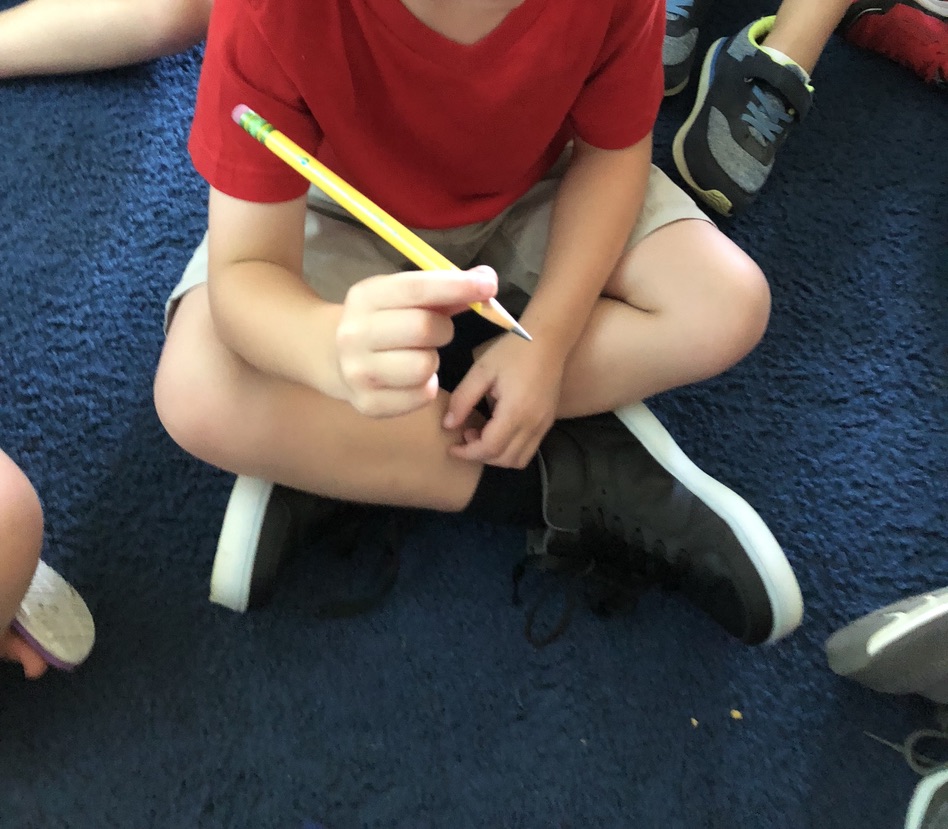
Establish Routines and Procedures
There are many routines and procedures that children need to learn at the beginning of the year. These include step-by-step tasks such as unpacking, washing hands, lining up, etc. Go through your day, from start to finish, and list all the routines and procedures that children will be required to know and do. Use a guided practice model, such as I Do, We Do, and You Do, to help your children learn and practice each procedure.

Create a We Practice. We Do. chart that shows which procedures the children are still practicing and which ones they’ve mastered.
Create Class Rules
Your classroom rules, agreements, or promises form the foundation of your classroom management program. Take time to envision the kind of classroom community you want to build, and then identify the rules and expectations that will help you create that. I choose language that is clear and simple, and break down each rule into 1-2 behaviors, or affirmations as we call them, that show children what that looks and sounds like in our classroom.
Open Centers
Make a list of any and all centers children will use, including those that are permanent physical spaces as well as portable bins or tubs. Decide on the order in which you will introduce them and fill them with simple, familiar, easy-to-use materials, so that your beginning of year directions are focused on how to use the center and not on the activity.
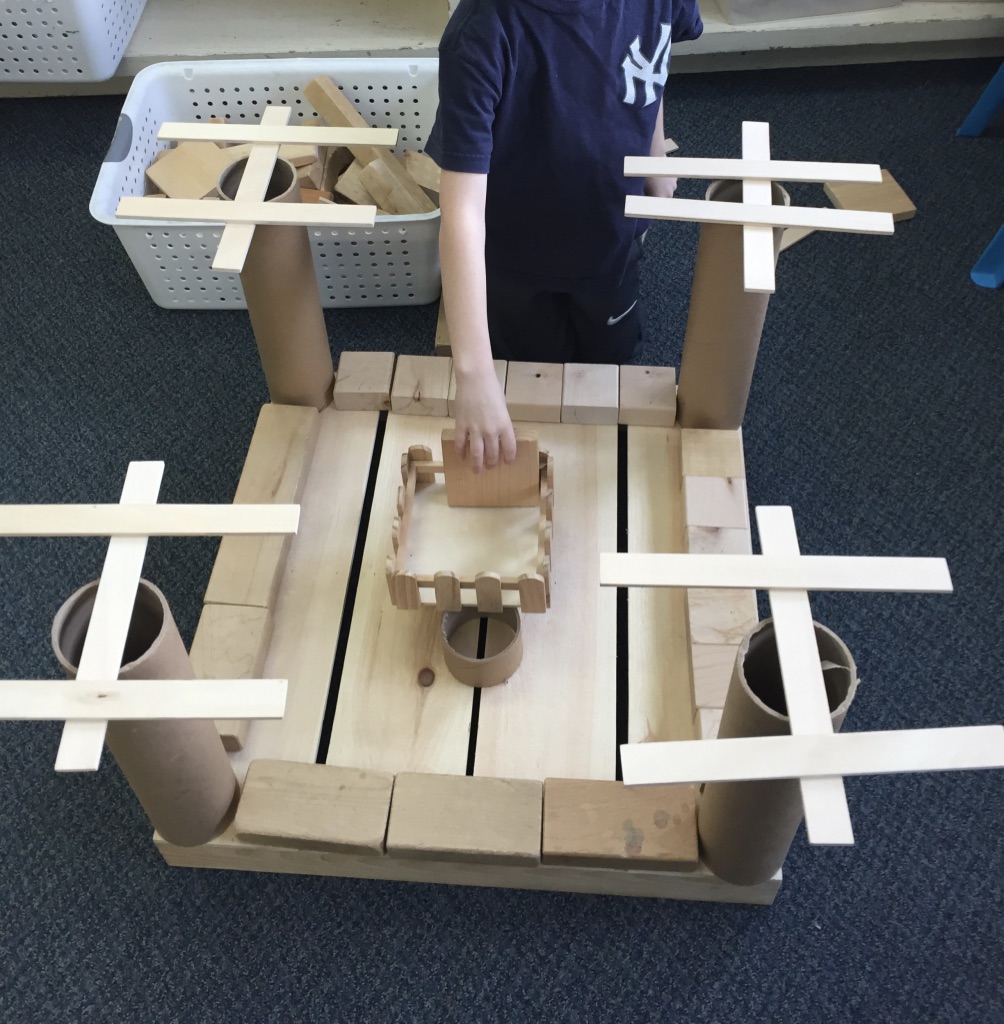
As you introduce each center, work together with children to create an “I Can” list of what they can do there. Share information about how many students can work in the center, where they can get their materials, and when and if they can switch centers.
Launch Learning Blocks
Learning blocks are the subject areas that make up your daily schedule. So here you are going to think about what will be included in your day, when it will happen, and what each block will look and sound like.
I created schedule cards that I place in a pocket chart and then flip over as each part of our day is completed. At the beginning of the year, I introduce one block at a time, and then we add that card to our schedule.
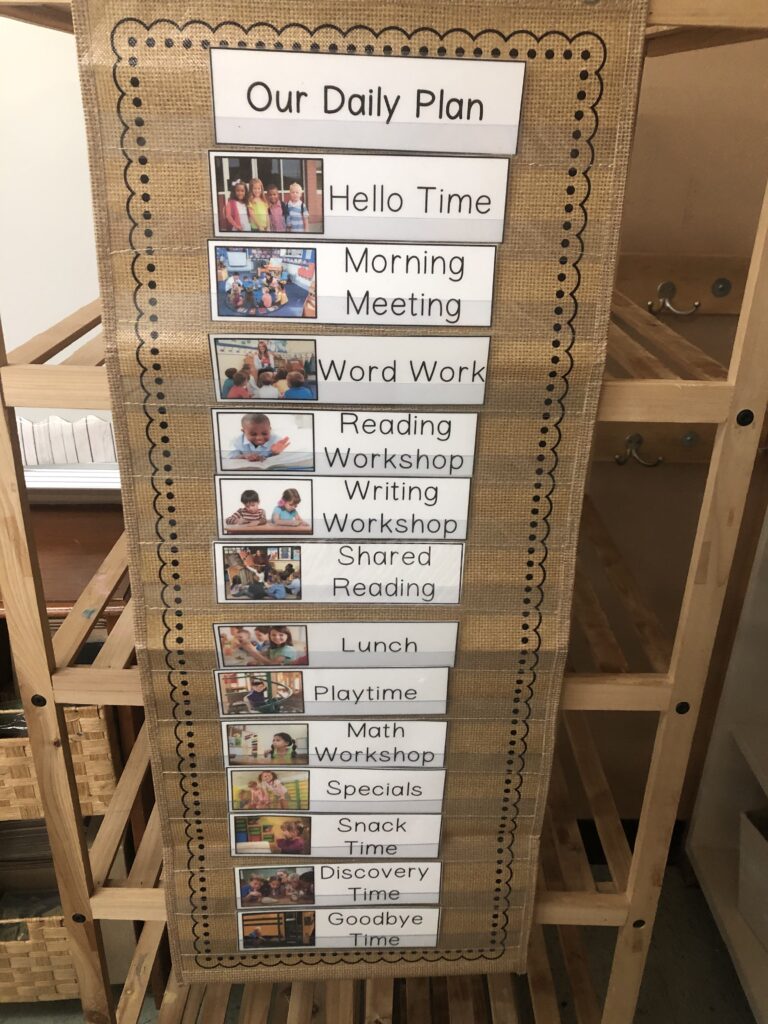
I’m careful not to launch all learning blocks on day 1. We spread them out over the first couple of weeks until everything is up and running.
Plan Get-to-Know-You Activities
These are activities that help you get to know your children and build strong relationships from the beginning.
Plan some fun get-to-know-you activities that you can sprinkle throughout your first weeks of school that will help your kinders build community, learn each other’s names, and find out more about one another.

How Do I Use the Building Blocks to Plan for the First Weeks of Kindergarten?
Once you’ve listed all that needs to be taught and introduced under each of the above “building blocks,” you are ready to create a roll-out plan where you will introduce a few items from each of the blocks every day. This creates a balance of activities, while allowing you to slowly build your first weeks of kindergarten.
Take a peek at my Kindergarten Kick-off 10-day plan for an idea of what that might look like.
And, as promised, here are some free Building Block Planning Sheets Planning Sheets that you can use to get you started and on your way to creating a smooth start to the new school year!
A Digital Plan for the First Weeks of Kindergarten
I’ve recently made my roll-out plan digital, with a set of color-coded slides for each building block, so I can easily reorder the slides at the end of the first day to build the next. I can also project them onto my Smartboard to have all the information I need to communicate at the ready for each new material, routine, rule, center, learning block, or get-to-know-you activity I’m sharing with children.
Creating these slides took some time in the beginning, but have become invaluable to me over the years. Rather than stressing out about those first weeks of school, I now have a solid kick-off plan that leaves me feeling confident, prepared, and well-rested to enjoy the last weeks of summer.
And you can have that too.
You can purchase the kick-off decks individually, there’s one for each building block, or buy the KICK-OFF BUNDLE so you can combine the decks to build your first weeks of school. Included in each, are blank slides so you can add in your own procedures, centers, etc. or add notes to the slides already included.
So, if those anxiety-ridden dreams about the first weeks of kindergarten have been haunting you, you can now rest assured knowing that you’ve got this, in the form of 6 building blocks, that will help you create a smooth start to the school year.
For more ideas on building classroom culture, check out the Growing a Community page, found in the Roots & Wings Resource Library.



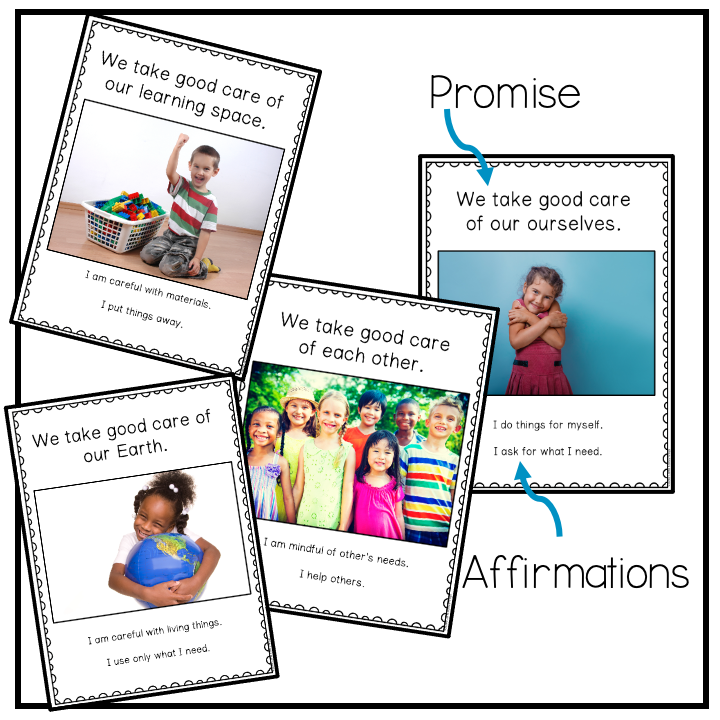


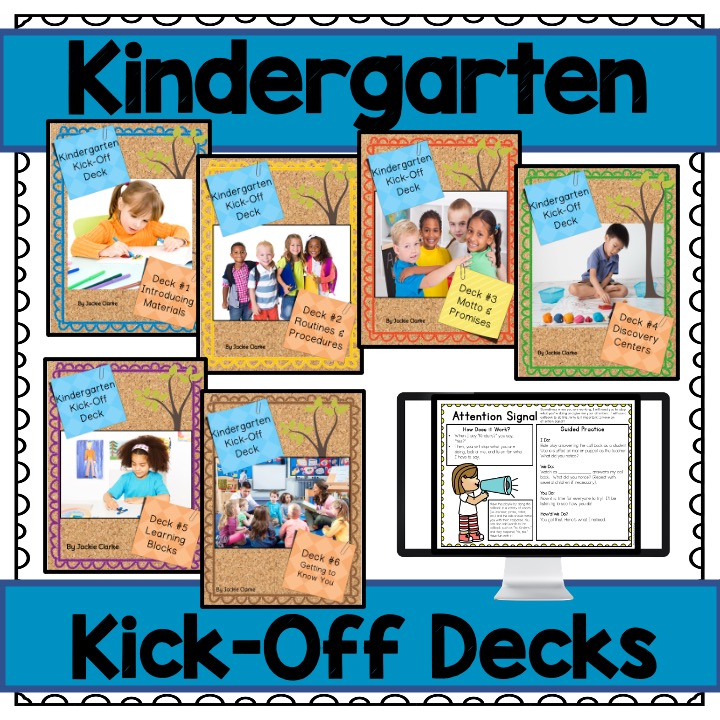
 5 Fun and Playful Ways to Introduce Kindergarten Classroom Supplies
5 Fun and Playful Ways to Introduce Kindergarten Classroom Supplies Co-Created Kindergarten Class Rules: Can We Do Whatever We Want?
Co-Created Kindergarten Class Rules: Can We Do Whatever We Want? Get-to-Know-You Activities for the First Weeks of Kindergarten
Get-to-Know-You Activities for the First Weeks of Kindergarten Our Kindergarten Friendship Feast
Our Kindergarten Friendship Feast